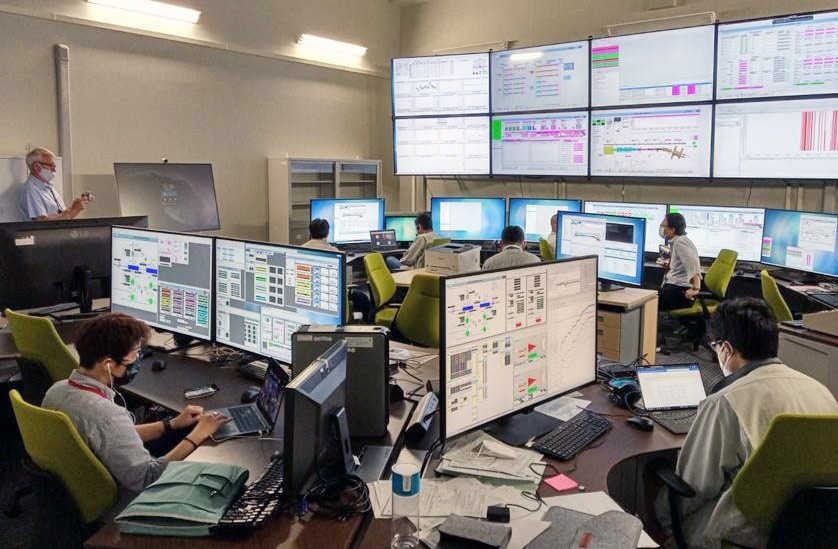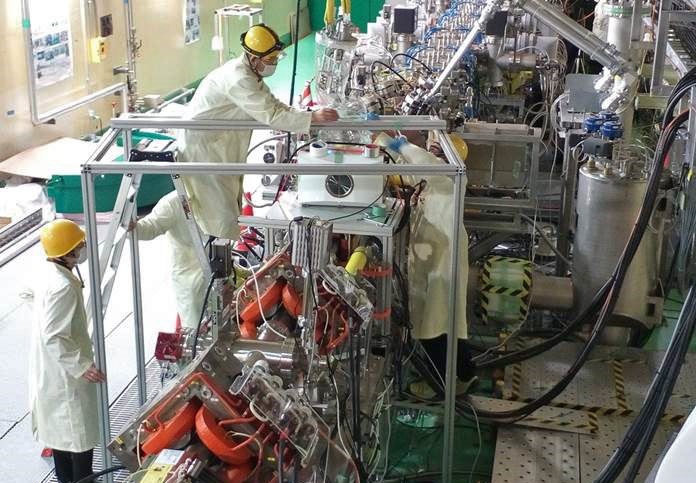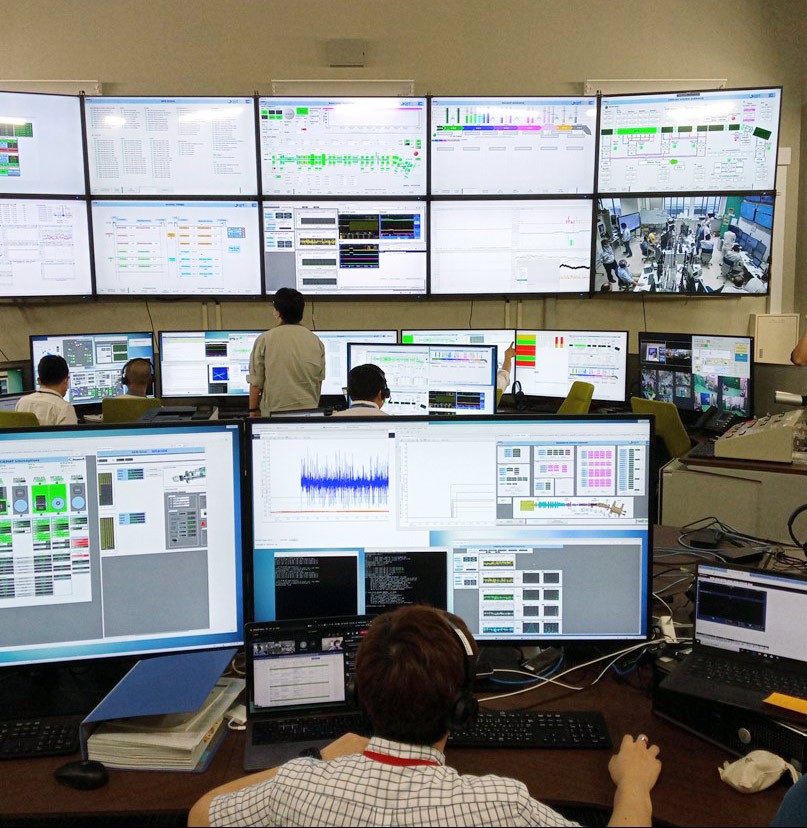Successful operation in LIPAc accelerator

Operation rehearsal in the Central Control Room. QST, Japan, June 2021. ©IFMIF/EVEDA
One of the challenges of the fusion machines that will come after ITER, such as DEMO, will be to have materials able to withstand the harsh operating conditions. LIPAc is the prototype accelerator that will help experts from Japan and Europe to validate the design of a neutron source facility aimed at testing such materials for fusion.
The teams working in LIPAc are enthusiastic because they have completed a major step in the development of the device: the accelerator has been able to produce a low intensity proton beam, accelerate it, and transport it in line with the requirements. This was achieved in the new configuration of the machine, which consists of the complete accelerator except for one subsystem –the so-called cryomodule, a superconducting accelerating unit which will be assembled next year.
This has been the result of three years of work, including two years of installation of all components, in difficult conditions due to the travel restrictions imposed by the COVID-19 outbreak. In particular, a new intermediate transport line has been prepared to stand in place of the cryomodule, connecting the medium- and high-energy parts of the accelerator. “This configuration was not planned at the beginning of the project and we decided to create it to optimise beam operation time and commission all the LIPAc subsystems apart from the cryomodule. The design was done by F4E in Garching, the beam modelling was done by QST with support of F4E and other institutes, and the procurement by QST. Additionally, the KEK Institute lent us four quadrupole magnets, which are the most expensive components. It is a very cost-effective solution that allows to optimise the overall LIPAc project schedule,” explains Hervé Dzitko, F4E Project Manager for IFMIF/EVEDA.

After a few rehearsals to test the remote participation tools put in place for the European experts, the beam operation took place on 15 July 2021, when a first proton beam was transported successfully through the accelerator and to a small beam dump (called Faraday cup) where the impact of the beam was confirmed.

“I was really excited with this achievement resulting from international cooperation. Many colleagues from European laboratories have been visiting Rokkasho and we have been working together very closely over the years. Then, the country was closed due to COVID-19, but we kept the attitude of moving forward together. Finally, we have succeeded in operating the new machine,” explains Keitaro Kondo, LIPAc on-site Japan’s Home Team Leader.
Later, the Faraday cup was extracted and the beam was transported until the end of the accelerator. The next step was to use a deuteron beam (particles made up of one proton and one neutron) instead of a proton one. This operation was also successful. Fabio Cismondi, LIPAc on-site EU-Home Team Leader, has been working for more than two years on the installation, commissioning and maintenance of components of the accelerator and of the ancillary systems. “When the LIPAc operation started I had seen all of them operating together, like instruments of a large orchestra, to transport successfully the particle beam, ultimately up to the beam dump. I admit it was fascinating and exciting. We have a collaborative work environment with EU and Japanese professionals committed to a common goal. I am looking forward to resuming beam operation.”
The first part of the campaign ended as planned on 30 July. Beam operations are due to restart in October, after the completion of the yearly maintenance of the LIPAc facility, and planned to continue until summer 2022. Step by step, LIPAc continues advancing and providing the fusion community with technical knowledge for the construction of neutron sources, such as DONES. This new milestone reinforces our confidence that we are on the right track towards the fusion machines of the future.